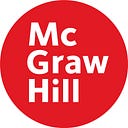Math Probes: Identifying Misconceptions to Build Understanding
With a Guide from Cheryl Rose Tobey, Mathematics Consultant
Helping every student build an understanding of mathematics is a challenging goal, but an important one. Early awareness of student difficulties and their sources, along with instruction designed to diminish them, is essential to achieving this goal. Formative assessment probes are designed to support teachers in identifying student misconceptions and making sound instructional choices. Mathematics education consultant Cheryl Tobey has put together a guide explaining probes and how to use them for furthering students’ conceptual understanding. You can download the full guide at the bottom of this blog. Continue reading for an overview of probes, their purpose, and their benefits to students.
The Power of Misconceptions
Misconceptions are flaws in conceptual understanding of a mathematical concept that lead to an error in application. Misunderstandings are common, and it is impossible to teach in a way that avoids creating any misconceptions. But, a teacher can minimize the chances of students’ harboring misconceptions by knowing the potential difficulties students are likely to encounter and implementing instruction to help students build conceptual understanding of the mathematics. The full guide provides several problems demonstrating common student misconceptions and responses.
What is a Probe?
A probe is a short, highly focused, quick-to-administer diagnostic assessment designed to pinpoint student misconceptions regarding a mathematics concept. Typically probes consist of three to six items that each require a two-part response. This helps to reveal underlying patterns in incorrect answers, and whether selected responses are supported by strong or faulty reasoning. Reference the full guide for examples of these probes.
When and How to Use Probes
Teachers need to be clear to students about the purpose of the probe and how they will use the information gathered. Although probes look similar to a traditional quiz, they are not meant to be graded. For students who are not accustomed to explaining their thinking, a probe can be challenging, so it’s important to support students over time. The full guide provides a chart that lays out when to use probes, who to give them to, and what to do after collecting the probe.
For more information on probes, how to effectively use them, and their relationship with formative assessment, see the full guide.
Cheryl Rose Tobey has 16 years of experience providing professional development to mathematics educators, primarily in the areas of diagnostic and formative assessments. She has coauthored 12 published Corwin books, including two volumes of the Mathematics Formative Assessment: Practical Strategies for Linking Assessment, Instruction, and Learning series, and seven books in the Uncovering Student Thinking series. Cheryl is currently a mathematics consultant who provides supports and developed materials for mathematics educators across the country through her work for Education Development Center (EDC) and Maine Mathematics and Science Alliance (MMSA). While at EDC and MMSA, she led multiple National Science Foundation (NSF) and state-funded grants focused on increasing student achievement for struggling learners. Along with 10 years as a classroom educator, Cheryl has extensive experience coaching teachers and using math probes and other formative assessment techniques to better understand student learning.

